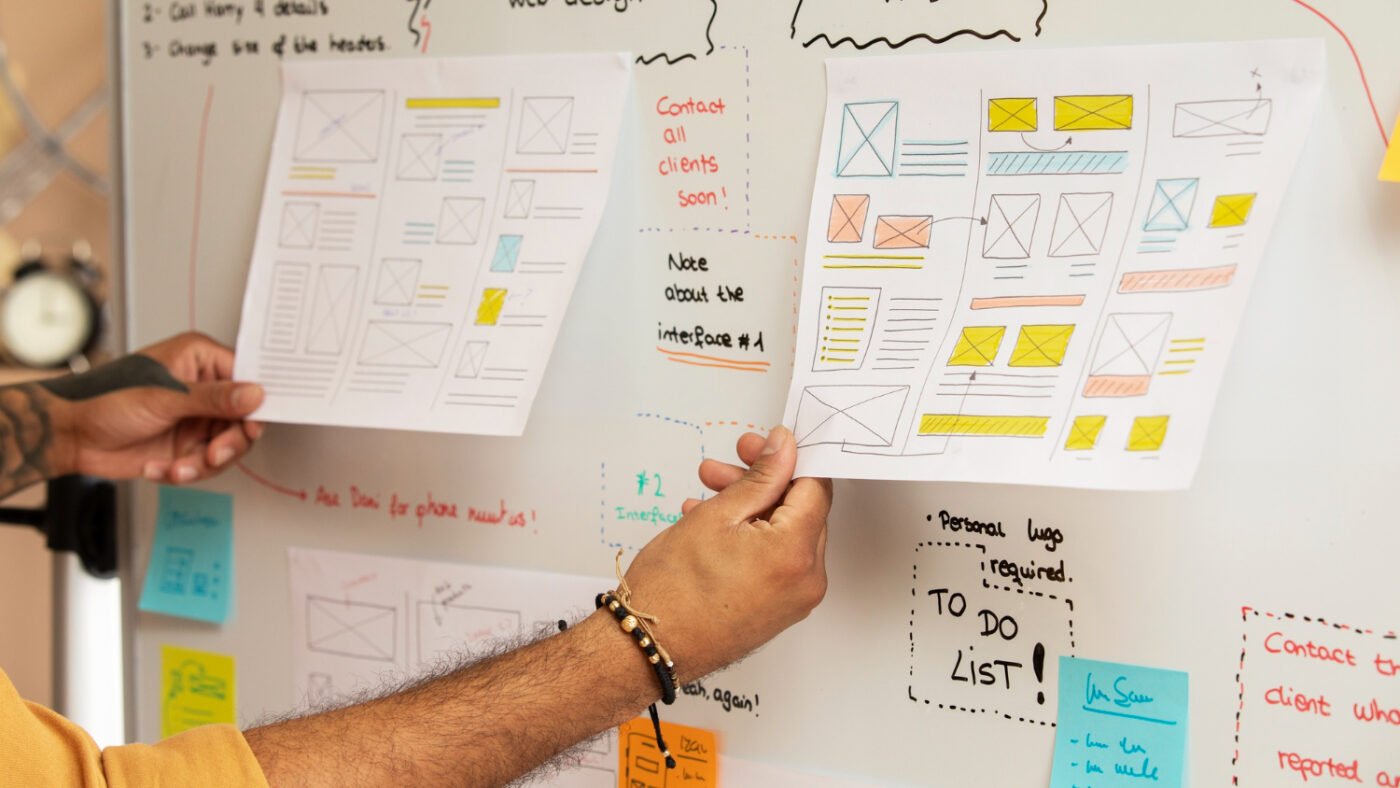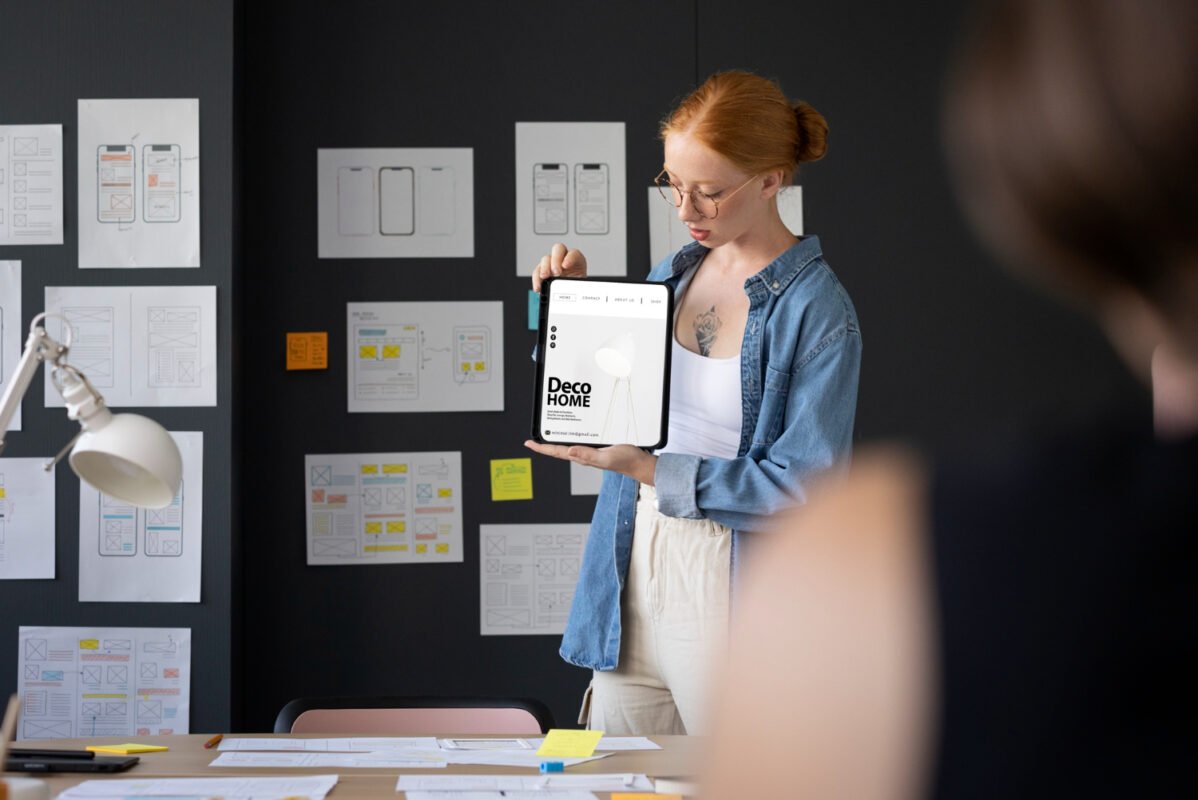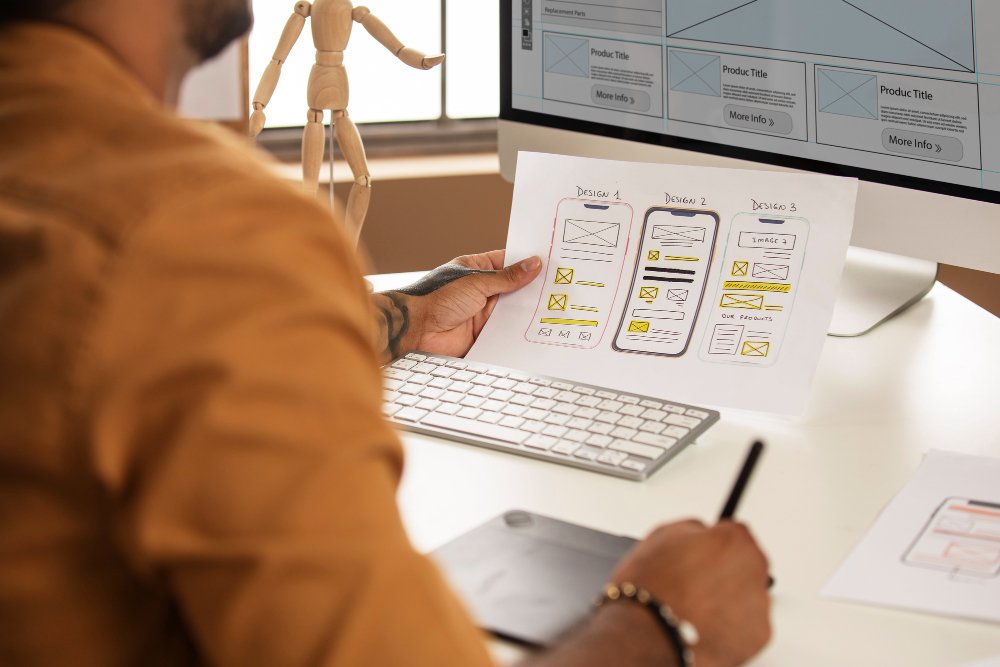When comparing product design vs UX design, you might wonder if they’re the same. Short answer: no. They may overlap, but they are not the same role. What are the differences between them? Keep reading.
Key takeaways:
- Product design covers the whole vision, while UX design focuses on user interaction.
- Understanding the difference between product design and UX design ensures the right role for the right outcome.
- UX is one part of product design.
Product Design vs UX Design: 7 Key Differences
Both product design and UX design share the common goal of creating user-centered solutions that deliver value. However, their approaches, responsibilities, and outcomes differ in several key ways. Here are the 7 most important distinctions between product design and UX design.
1. Focus and Scope
At a glance, product design vs UX design differ by scope. Product designers look at the whole lifecycle. They ask who will buy, why they’ll return, and how the product scales. At the same time, UX designers concentrate specifically on the instance when an individual interacts with the product. They examine procedures, comprehension, and accessibility.
For context, market numbers help. Product design services forecasts show steady growth into 2030. By contrast, UX services project substantial expansion as companies invest in digital experiences. Therefore, product work often ties to a broader business agenda, while UX work directly targets user behavior and task success.
For example, a product designer will weigh whether a subscription model makes sense for scaling. A UX designer will test how quickly a user completes the subscription flow without errors.
Also Read : How to Improve Your Drawing Skills with Significant Results
2. Primary Objective

A UX designer planning the app layout (Source: freepik.com)
Both share objectives but have different foundations. Put simply, product design aims for market fit and sustainable business outcomes. It asks: Will this product solve a market problem and bring value to the company? Conversely, UX design aims for usable, accessible, and satisfying experiences. It asks: Can people accomplish tasks smoothly and enjoyably?
As a result, product teams monitor usage and earnings following product launches, while UX teams monitor the completion of tasks, error rates, and satisfaction ratings from assessments.
3. Role in the Process
The responsibilities of individuals in product design vs UX design differ from one another. Product designers attend vision and strategy meetings. They assist in creating roadmaps and determining feature priorities while remaining engaged throughout the launch and feedback process.
UX designers concentrate on discovery and validation. They run interviews, build wireframes, and lead usability tests. In practice, a product designer will lead cross-functional roadmap sessions. Then a UX designer runs studies to validate the highest-risk assumptions. Therefore, one determines the goal while the other evaluates the path.
Also Read : 10 Best Picks for the Best Laptop for Digital Art and Design
4. Key Deliverables
What is the difference between product design and UX design in their deliverables? Product designers hand off roadmaps, feature specs, business cases, and high-level prototypes. UX designers hand off user flows, personas, wireframes, test findings, and interaction details.
If you’re keen on the method, take a look at the product artifacts. If you aim to address friction, consult the UX reports. Preferably, both teams combine these results for the final decision.
5. Metrics for Success
Different KPIs guide each role. Product designers watch business metrics, such as adoption, revenue per user, retention, and market fit signals. Meanwhile, UX designers watch usability metrics, like task success, completion time, error rates, and satisfaction scores.
For example, reducing checkout errors often improves both user satisfaction and conversion. This shows why great product decisions come from measuring both kinds of outcomes. Metrics tell you how product design vs UX design are performing, separately and together.

A product designer presents the product to an executive (Source: Freepik.com)
6. Skillset and Tools
Skills overlap but emphasize different strengths. Product designers mix strategy, prioritization, and design craftsmanship. They use analytics, roadmapping tools, and product frameworks. UX designers lean into user research, prototyping, and testing toolkits.
Both use design and prototyping apps. Yet product designers lean more on market analysis and trade-off management, while UX designers lean on observation and iteration. For job seekers, case studies show that measurable impact beats portfolios of polished screens alone.
Also Read : How to Choose a Drawing Tablet for Your Comfort
7. Collaboration and Stakeholders
When comparing product design vs UX design, the differences are notable. Product designers work widely. They coordinate with executives, engineers, marketers, and support teams. UX designers collaborate closely with developers, researchers, and UI designers. Each brings different evidence to meetings. Product designers bring market signals and priorities, while UX designers bring user clips and test data.
In launches, product designers may negotiate scope to meet business goals. At the same time, UX designers show friction points that justify changes. Shared goals, such as improving onboarding retention, help both parties move in the same direction.
Also Read : 10 Logo Design Tips for Beginners to Create Memorable Logos
Is Product Design the Same as UI/UX?
No. The product design sets direction and product strategy. At the same time, UX design refines the user’s experience in real time. Both roles are necessary for sustainable, usable products. Also, small design details influence perception. If you’re looking for typefaces that support clear UI and product copy, consider Letterara Studio and explore the best display fonts for your design. The right font makes text easier to scan and reduces micro-friction in interfaces!

